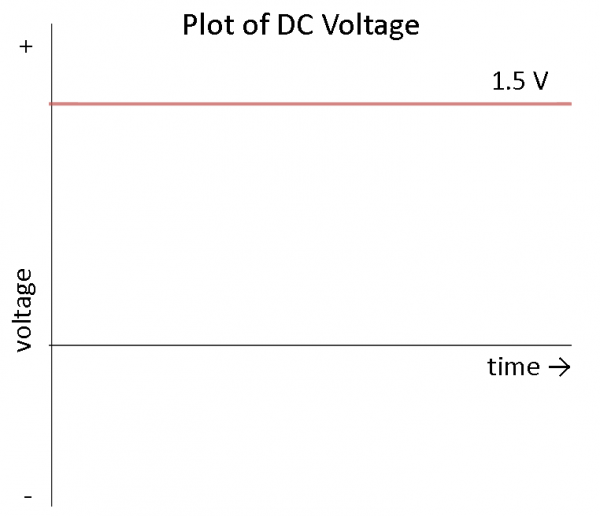There are two types of electrical signals , those being alternating current (AC), and direct current (DC).
Alternating Current (AC)
Alternating current describes the flow of charge that changes direction periodically. As a result, the voltage level also reverses along with the current. AC is used to deliver power to houses, office buildings, etc.Generating AC
AC can be produced using a device called an alternator. This device is a special type of electrical generator designed to produce alternating current.A loop of wire is spun inside of a magnetic field, which induces a current along the wire. The rotation of the wire can come from any number of means: a wind turbine, a steam turbine, flowing water, and so on. Because the wire spins and enters a different magnetic polarity periodically, the voltage and current alternates on the wire. Here is a short animation showing this principle:
(Video credit: Khurram Tanvir)
Generating AC can be compared to our previous previous water analogy:
The sine wave is unique in that it represents energy entirely concentrated
at a single frequency. An ideal,
unmodulated wireless signal has a sine
waveform, with a frequency usually measured in megahertz
(MHz) or gigahertz (GHz). Household
utility current has a sine waveform with a frequency of 60 Hz in most countries including
the United States, although in some countries it is 50 Hz.
Direct Current (DC)
Direct current is a bit easier to understand than alternating current. Rather than oscillating back and forth, DC provides a constant voltage or current.Generating DC
DC can be generated in a number of ways:- An AC generator equipped with a device called a “commutator” can produce direct current
- Use of a device called a “rectifier” that converts AC to DC
- Batteries provide DC, which is generated from a chemical reaction inside of the battery
The tank can only push water one way: out the hose. Similar to our DC-producing battery, once the tank is empty, water no longer flows through the pipes.
Describing DC
DC is defined as the “unidirectional” flow of current; current only flows in one direction. Voltage and current can vary over time so long as the direction of flow does not change. To simplify things, we will assume that voltage is a constant. For example, we assume that a AA battery provides 1.5V, which can be described in mathematical terms as:If we plot this over time, we see a constant voltage:
What does this mean? It means that we can count on most DC sources to provide a constant voltage over time. In reality, a battery will slowly lose its charge, meaning that the voltage will drop as the battery is used. For most purposes, we can assume that the voltage is constan







0 comments:
Post a Comment